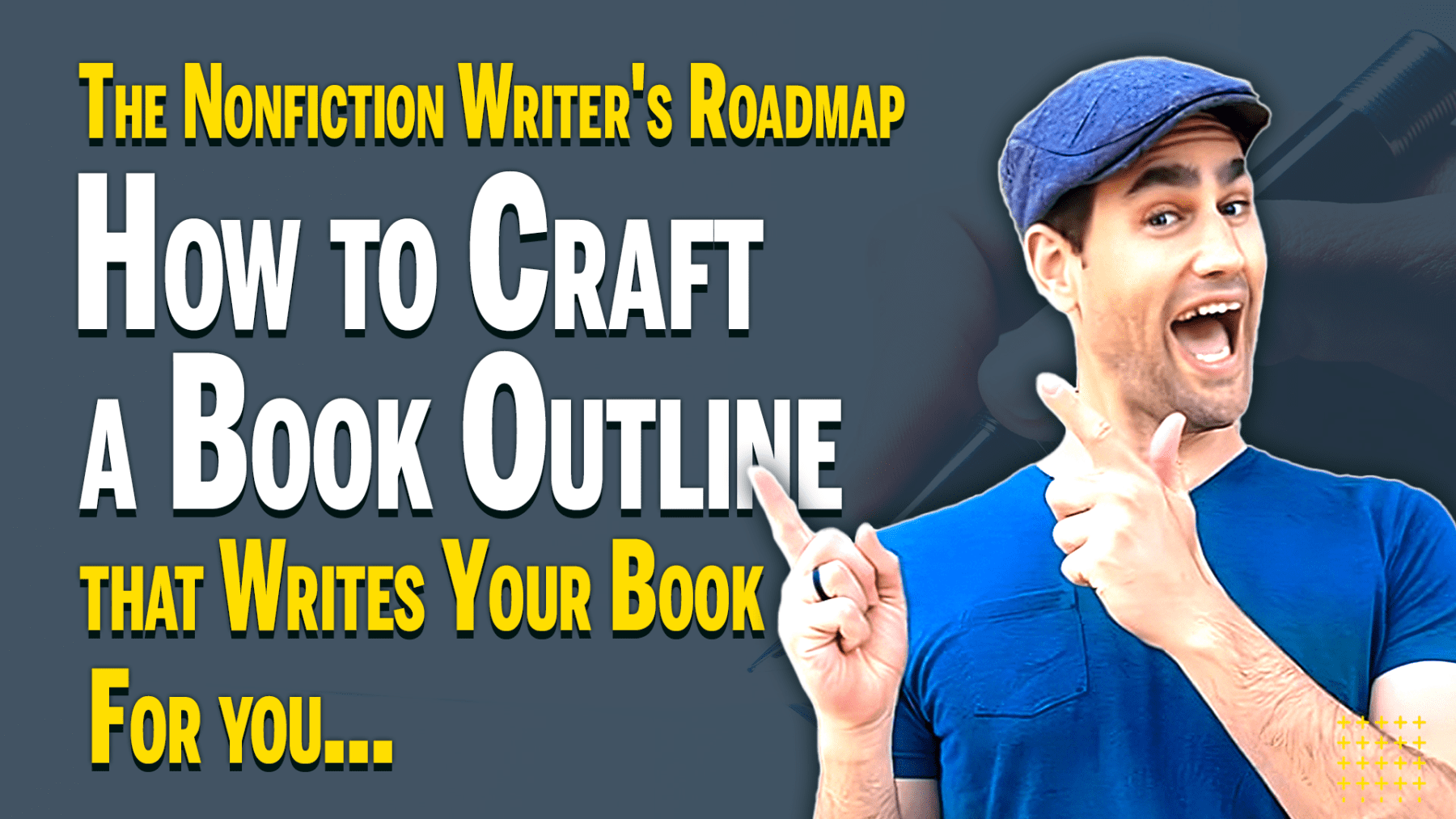A Non-Fiction Author’s 7-Step Guide to Picking the Perfect Book Title
Picking the title for your book is like naming your kid. Once you’ve penned the name, it’s set in stone. It better be a good name or they’ll have a bad nickname chasing them around for years.
Your book is your baby. Give it the wrong name and no one will buy it. This fear is prevalent in even the hardiest of writing folk.
And it’s valid. Bad titles ruin perfectly good books.
Too many authors wait until the last minute to consider their book title. Book cover, title, and sales copy are the three most important pieces of marketing you will ever do. An excellent cover grabs the eye, a good title captures the mind, and powerful salescopy makes their mouse go click, click, sold.
This post will take you through the exact brainstorming process I’ve used for myself and for my authors to discover the right book title. We’ll use several tools to help us stay on course even if we aren’t feeling creative.
I’m making the dangerous assumption you’ve already started the book outlining process, or, at the very least, have an idea for a book?
If so, here is the 7-step process to peeling back the veil on the perfect title for your book:
- Draw and Capture: Understand the intoxicating magic of the main title and the messaging job of the subtitle.
- Start with Why: Determine your reason for writing.
- The Creepy Leprechaun Strategy: Who are you writing to/for and what are you helping them solve?
- Flash Research: Do quick title research of titles of books in your genre with the help of several tools.
- Unleash Your Mindstorm: Empower your creative side by using the best tool you’ll ever come across. (I’ll end the suspense, it’s your brain!)
- Pick a Working Title: Start your book draft with a working title and let it breathe as you write.
- Sharks in the Water: Test out your title by asking for feedback.
Let’s get started by taking a deeper look at each of these steps. Vamos!
1) Draw and Capture
Draw the reader in and then capture their attention. The main part of your title should be 3-4 words and it should draw people in. It’s the lure you use to catch the fish.
The subtitle exists to define the problem and tell how you’re going to solve it. It can be anywhere from 5 to 14 words depending on what keywords you need to use, and how you want to explain the title. Give the reader the next little bite but don’t give them the entire story.
Let’s look at a couple great examples of excellent book titles:
The Impact of Identity: The Power of Knowing Who You Are
I like this title because The Impact of Identity draws you in. It makes you think and wonder what the book might be about. It doesn’t tell me anything, really, about what the book contains, but that’s okay.
The subtitle, The Power of Knowing Who You Are, makes it immediately clear it’s a book about finding yourself and how going on a journey of self-discovery might be a good idea.
The combination of a title that draws me in and a subtitle that captures a bit of my desires, leaves me wanting more. I want to get to know more about the book and what it offers.
Let’s look at one more?
Make Your Bed: Little Things That Can Change Your Life…And Maybe the World
I hate making the bed. So, naturally, I’m immediately angry at the insinuation that I should make my bed.
Then I see that making my bed could change the world? How? Could it be possible…
I want to know, and thus, I am forced to investigate further.
This basic structure is a starting point, so venture forth if you’re so daring. Stick to the key attribute of drawing and capturing and you’re off to a great start.
In your book outline, in a separate document, or the napkin on the table, start jotting down ideas as you go throughout this process.
2) Start with Why
In my book outlining process, I always encourage the writer to start with why so that they will actually finish their books. Why are you writing the book? What do you hope to gain from its publication? What will motivate you to sit down and write every day?
Answering these questions is critical for the entire writing process, but even more important to the titling journey. If you already know your reasons for writing, great. But if you are unsure, sit down with a pen and paper and answer the following questions:
- Why am I writing this book?
- What inspired me to write this book?
- I have the completed book in my hands, who am I going to give it to and why?
- What is the primary message or theme I want to convey through my writing?
- What is unique about my book idea?
- What emotions or feelings do I want my readers to experience while reading my book, and why are these important?
- What do I want readers to remember most about my book, and why do I believe it is important?
- What is the last call to action?
Doing the work here will ultimately help you distill the book’s essence down into written form. As you consider here, let your creative juices flow to think about what title would be a coalescence of your reason for writing.
3) The Creepy Leprechaun Strategy
A tap on the shoulder…
“What’s that you’re reading?”
A shriek…
Woman runs out of the room screaming.
“Hmm I guess that wasn’t the best approach after all?” says Patrick as he hops off the couch. “Next time I’ll just listen and watch.”
It’s your job to walk a mile in your readers’ shoes, or more memorably, sit on their shoulder as they go about their day.
Notice what problems they have, note what keeps them up at night, be aware of what they wish they could change about themselves or their lives.
The title for your book is the right combination of words that perfectly fulfills their deepest desires. The creepy leprechaun uses this strategy as it considers how it can grant the wish.
Then, you can transform from creepy leprechaun to wish-fulfilling new best friend as you suddenly think of the best title for your book.
4) Flash Research
As you’re coming up with ideas for titles, research can help further get the brain going. Here are three tools you can use for research if/when you need an assist:
- Amazon/Goodreads: Check out other books in your genre. What titles do they use? What is missing that would fit perfectly that you can write about? What are some of the general themes you see?
- Chat GPT: Asking ChatGPT for a list of examples is great for getting the ideas flowing. If you have an idea already for a title, enter this as a prompt: “give me examples of creative/engaging/interesting titles like “(insert your working title)”.
- Asking friends in person: The next time you’re out having a beer with your buddies or a glass of wine with close friends, ask them what their favorite books are. And if you feel brave, ask them for ideas on what they might call your book if they were writing it.
Do this research quickly. Take snapshots in your mind, make notes, and continue writing down new title ideas as they come to you.
5) Unleash your Mindstorm
It’s completely acceptable to think outside the box and embrace unconventional or memorable title choices. This is how your book will stand out. Sometimes, and depending on the genre, the wackier the title, the better off you’ll be.
These tiles are odd, but they certainly stick with you when you hear them:
- The Zombie Survival Guide: Complete Protection from the Living Dead by Max Brooks
- The Life-Changing Magic of Tidying Up: The Japanese Art of Decluttering and Organizing by Marie Kondo
- Everything I Want to Do Is Illegal: War Stories from the Local Food Front by Joel Salatin
- Cooking with Poo: Thai Cuisine with a Twist by Saiyuud Diwong
- Fifty Shades of Chicken: A Parody in a Cookbook by F.L. Fowler
I’m not saying these titles are perfect, but they definitely make you stop and think.
You are a writer/creator! Use your creative juices and don’t be afraid to get a bit wacky. Who knows? You might just stumble on the next Everybody Poops.
6) Pick a Working Title
At some point, you’ll need to pick the best title you have, stick it in your outline or on the top of your manuscript draft, and then get back to writing.
As you write, you’ll notice the working title every time you get to work. Sometimes it will feel perfect, but other days, it might feel off. And then, as you write more and more of your book, it might feel like the title is no longer consistent with what the book is actually about.
Go back to your list within the outline and see what other ideas might now work better. If nothing strikes your fancy, repeat the brainstorming process here that worked the best for you.
Keep working at it until the perfect title strikes you, but know that it too might eventually change.
7) Sharks in the Water
Asking for feedback as an author whether you’re new or seasoned is never fun. Throwing your book idea out there to the sharks of social media sucks. However, if you open yourself up to the process, you will gain so much more than you lose.
The last step (and the most frightening!) is getting feedback on your title. Once you’ve come close to finishing the first draft of your book, ask a few friends for feedback on the title. This is the time to announce you are writing a book and drum up some initial buzz for your book.
Pick 3 to 4 of your best titles and ask people to pick their favorites. This will help you see what draws and captures people. You don’t need to make the top choice your final title, but if your favorite title gets zero votes, it might be worth it to rethink things.
Learn to trust Your Instincts: Ultimately, trust your intuition and personal judgment. Select a title that resonates with you and feels representative of your book’s content and goals.
All the best,
-Jordan
PS: If you’ve made it this far, I have a surprise for you. I’m offering a FREE course on how to finally start your book. Create a stellar outline: your book writes itself. Go here to sign up.




Recent Comments